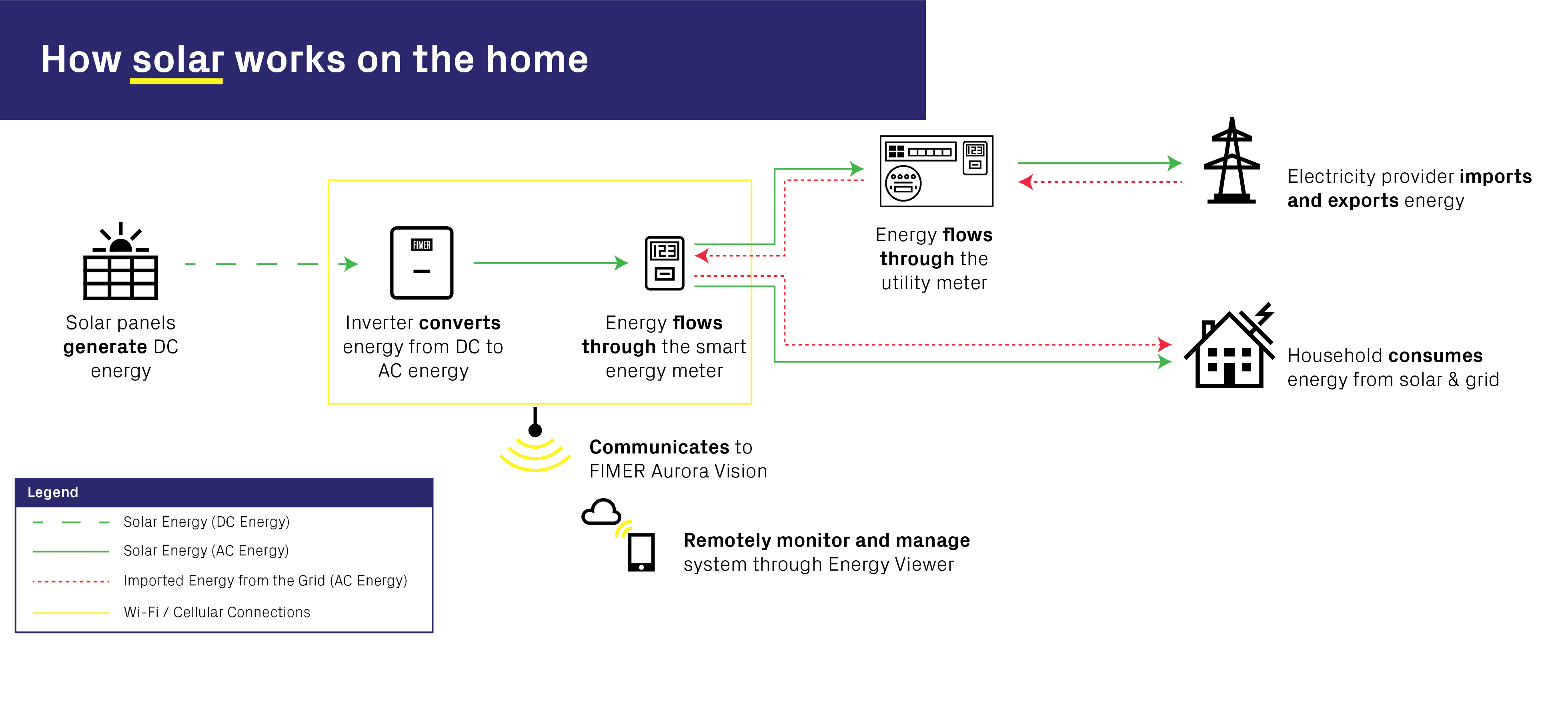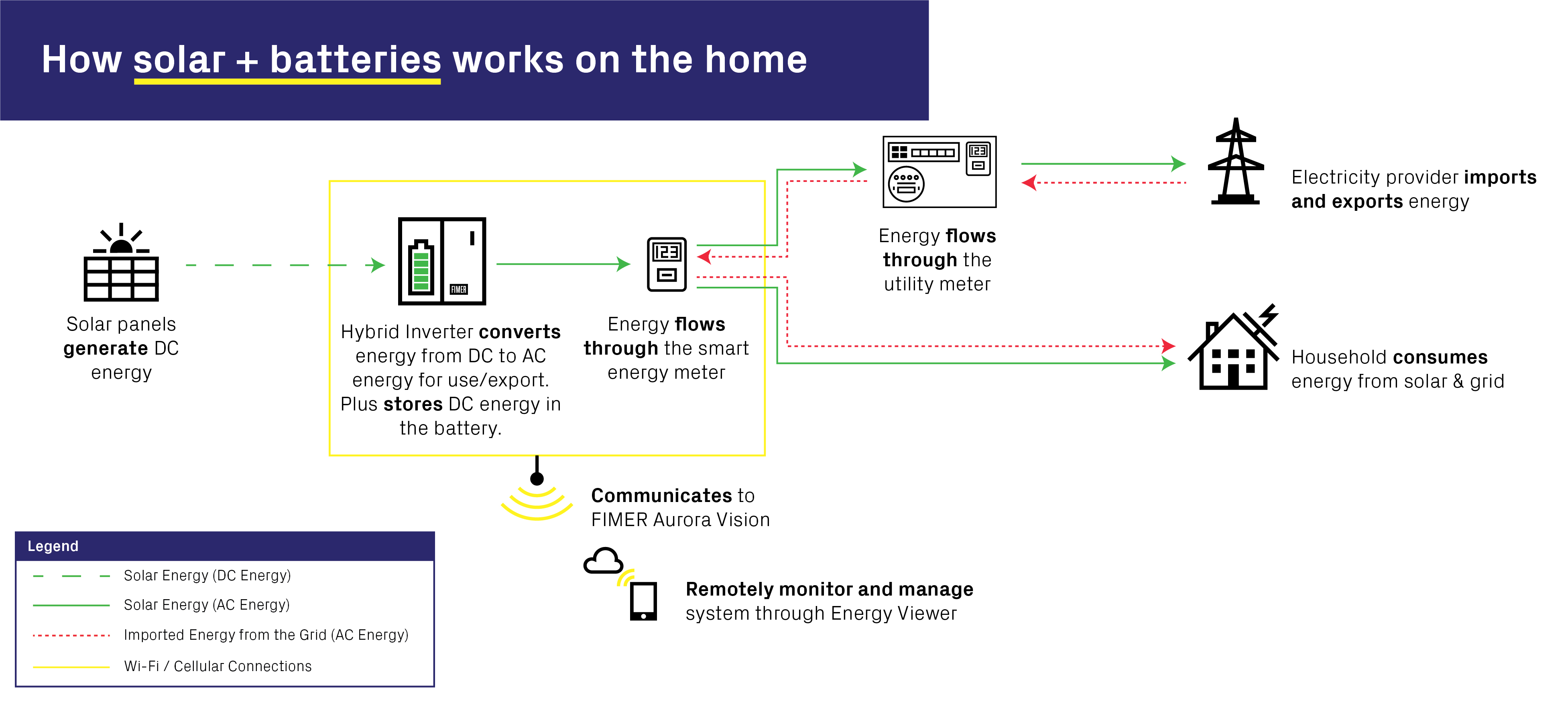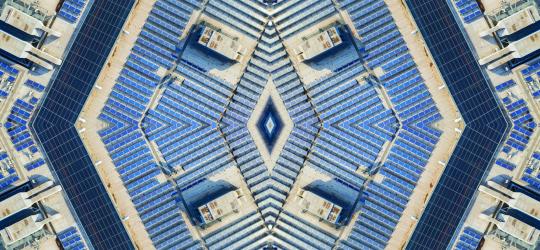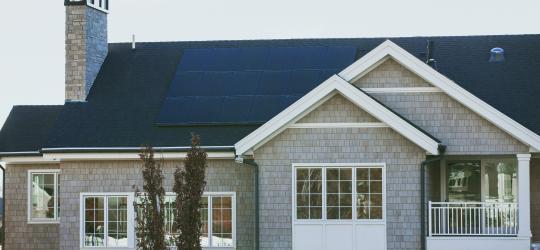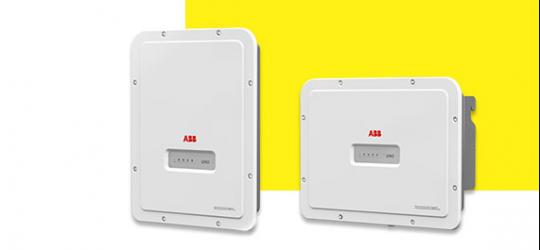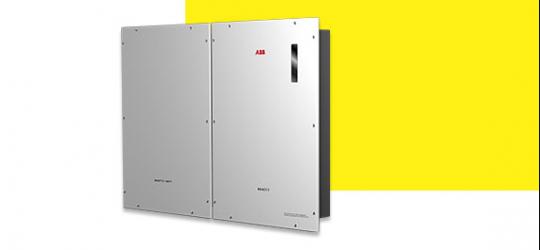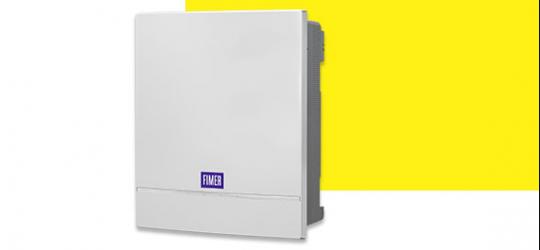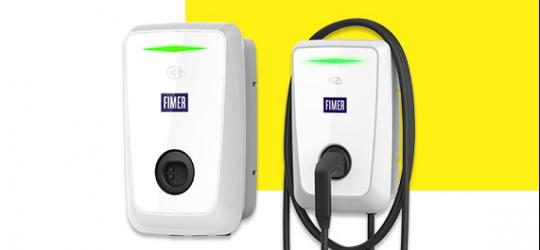| FIMER Australia | |||
|---|---|---|---|
 |
 |
 |
 |
| FIMER for home | FIMER for business | FIMER for installers | About FIMER Australia |
How does solar work and what makes up a solar system?
There are many great articles online that explain the science of how energy is captured from the sun. This short article will provide a quick overview of how solar works and what makes up a solar system.
So how does solar work?
In general, there are four steps on how your home solar works.
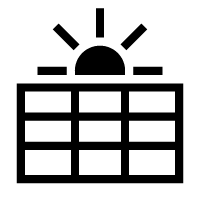
Turn light into electricity!
Solar panels are made from silicon. When the sun’s rays hit them, it causes a chemical reaction called the Photovoltaic Effect to take place. This reaction generates DC Electricity.
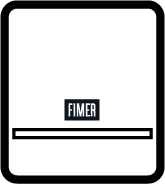
We have energy, what now?
Unfortunately, you can’t do much with DC Electricity, and you will need a solar inverter to convert this DC electricity into AC electricity. The inverter will work non-stop during the day to convert energy that can be used within your home or be exported to the grid.
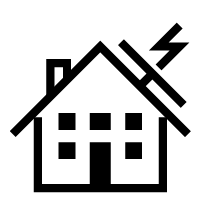
Now, this is what I can work with!
The inverter will send the AC electricity into your switchboard and then into your home. If you add a smart energy meter, it will flow through that too and allow you to monitor your energy consumption.
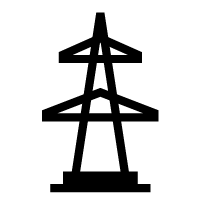
Waste not, want not
For any unused energy you don’t need, it can be stored in your home battery (if you have one). If allowed by your energy distributor, it can also be sent through the utility meter and be exported back to the energy grid. You will then be paid per kWh on your next bill in the form of an energy credit.
So, what makes up a solar system.
For those looking into solar for the home, you might not realise what makes up a solar system. This section gives a quick overview of what components are part of a system and how it works.
Solar panels are the face of solar, they are the most recognisable aspect of solar, but they aren’t the only component of a solar system. These panels are placed on the roof and are connected to solar racking. Each solar panel will have an electrical cable run from it and connect it to the next panel, which makes up a string of panels. These strings are then fed through a rooftop DC Isolator and down to the solar inverter.
The solar inverter will take the energy produced by the panels and convert it into AC electricity. AC electricity is what powers appliances and equipment in your home and is transferred through electricity lines.
The energy produced will either go into your house for self-consumption, or it may be able to be sent via the utility meter and back into the grid (which your energy provider will pay an agreed feed-in fee).
In Australia and New Zealand, there are many rules and regulations on how these components are installed, so it is essential to have an experienced and accredited solar installer design and install your system.
